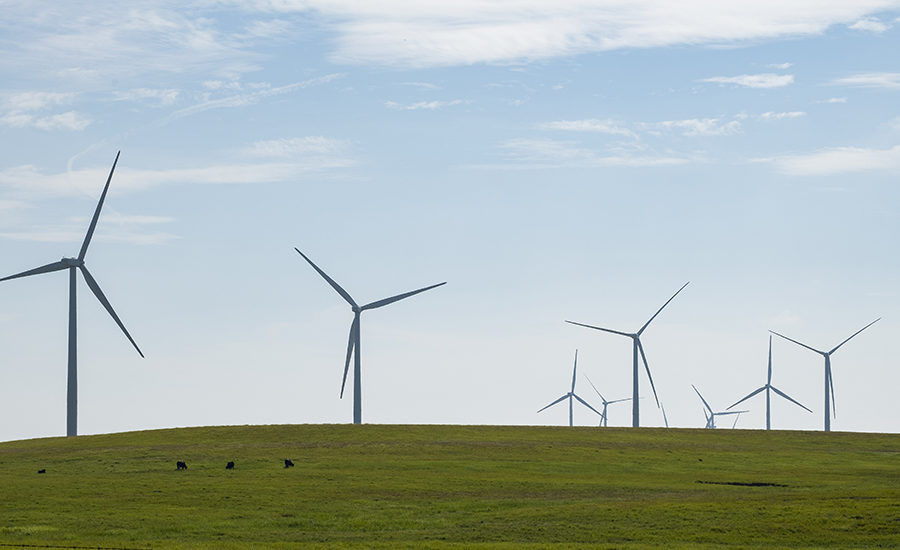Giga-projects getting expensive even for Saudis | Transportation tech and future P3s | Caution for wind farm developers around split estates

infrastruttura
no. 46
Mega-project ambitions in Saudi Arabia are creating a cash crunch in Riyadh for Vision 2030.
From the PGA Tour to the 2032 World Cup and a new airline, Saudi Arabia has been on a spending binge since 2020. But de factor ruler MBS's "giga-projects" are starting to strain the Kingdom's cash reserves as it pushes to realize its Vision 2030 through the New Murabba, NEOM, and Diriyah developments. Will these futuristic giga-projects ever make it across the finish line?
Halfway through Vision 2030, giga-project spending is ramping up in Saudi at a moment when inflation and rising interest rates are colliding with stagnant oil revenues. According to the Wall Street Journal, the current state of the Kingdom's finances make it plausible that dreams of turning it into the "Europe of the Middle East" could be scaled back or pieces even scrapped.
For example, since December 2020, when the Saudi sovereign wealth fund began reporting data on its reserves, cash-on-hand has dropped by 75% to around $15 billion. Yet the Kingdom will need at least $300 billion more just to complete NEOM.
This is a problem because Saudi Arabia's oil revenues are flat. The government needed $86 per barrel in 2023 and $80 this year to balance its budget; prices have averaged around $81 over the last year. But the country's overall finances still look good by comparison - it ran a budget deficit of just 2 percent of GDP in 2023 (compared to over 6 percent in the US) and its overall debt stands at 26% of GDP (although it was less than 1.5% in 2015) compared to 123% in the US.
Still, to keep projects moving, the Kingdom is considering another sale of stock in Saudi Aramco (the world's third most valuable company, behind Microsoft and Apple). In 2019, the country's sovereign wealth fund (the PIF) raised over $25 billion by selling around 1% of Aramco. It could do the same today. Alternatively, Saudi Arabia will need to borrow, taking on more financial risk by either adding debt or lowering its foreign-currency reserves (which allow it to keep its currency, the riyal, pegged to the dollar, and which have already dropped to $400 billion from $700 billion in 2015).
The Kingdom's cash crunch is also due to relatively limited direct foreign investment (DFI) to date in its Vision 2030 projects. Why? MBS's promised legal and social reforms have moved slowly. Geopolitical tensions have lingered over the 2018 death of Jamal Khashoggi. And the war in Gaza has both cooled the rapprochement between the Kingdom and Israel and made foreign investors more cautious when looking at the Gulf.
Will Saudi realize its dreams of terraforming the desert or will these giga-projects end up as white elephants come 2030? Despite these macro headwinds investor sentiment is still mostly positive. According to P3 Bulletin "Saudi Arabia is viewed as a much safer bet now than it was a few years ago, as it continues to modernize its business red tape, customs procedures and so on." But conflicts throughout the Middle East remain a wild card both for the Kingdom and the broader region. So don't get your skis sharpened for a trip to NEOM after watching Saudi Arabia lift the 2032 World Cup just yet.

Infrastat of the week.
44 percent: Decrease in funding for construction tech startups in 2023, down to $3 billion from $5.4 billion in 2022, although there have been some notable rounds recently for PermitFlow ($31M), Shepherd ($13.5M), and Document Crunch ($9M).

Investors are bullish on technology changing the sluggish trajectory of the North American transportation P3 market.
Large transportation P3s have been increasingly few and far between in recent years thanks to federal funding from IIJA and IRA and other well-documented commercial and risk challenges, particularly in the horizontal infrastructure markets. But a recent poll of P3 Bulletin investors and practitioners has the industry feeling more positive about the future of the delivery model thanks to an influx of new technologies and interested verticals.
First, while government agencies are generally shunning mega-project P3s in the US, they are interested in leveraging private capital and expertise in the microtransit and last-mile delivery markets, among other mobility sectors. For example, "transit tech" companies like Via have partnered with Arlington National Cemetery and the City of Denver (among other similar clients) on last-mile delivery and microtransit solutions, while various municipalities in California are also exploring how to leverage P3s in surface transportation and transit innovation corridors.
Second, investors are bullish on P3 opportunities for battery storage and hydrogen fueling networks, particularly for electrifying bus, rental car, and trucking fleets. But public EV charging networks will likely remain elusive in the near-term because project financeable models still don't exist at scale. The recent lull in EV sales (40% year-over-year growth in 2023, down from 75% in 2022) continue to compound the sector's inertia in the US.
Finally, the industry at large is excited about AI's potential to derisk projects much earlier in the P3 process, as well as shorten overall delivery schedules as the digitalization of our industry accelerates. P3s are likely to remain part of the North American infrastructure scene. But in time and thanks to new technologies they are likely to look quite different from traditional horizontal procurements.

Infraquote of the week:
What’s encouraging is it’s just continuing that structural decline in fossil fuels. We think it’s the lowest point ever, because before that fossil fuels were making up the majority and there wasn’t anything else to replace it.
Sarah Brown, Europe program director at think tank Ember, rhapsodizing about the EU's record-breaking drop in pollution from fossil fuel-based power plants in 2023, to less than a third of total electricity generation across the continent.
/cdn.vox-cdn.com/uploads/chorus_asset/file/25270371/1243735662.jpg)
Wind farm developers need to pay careful attention to "split estates" when negotiating project leases.
Earlier this year, a federal judge ordered Italy-based Enel Green Power North America, which is the fourth-largest US renewable energy developer, to deconstruct an 84-turbine, 150-megawatt wind power project on Osage Nation land in northern Oklahoma.
Construction on the wind farm started in 2013 and finished in 2015. The developer properly leased the surface rights from the tribe in the mid-2010s. But the court determined Enel had failed to properly secure the mineral (subsurface) rights it needed to construct the turbine foundations. (Each turbine requires bases that are 10 feet deep and 50 feet wide - another argument in favor of developing increasingly lighter wood turbines like those in Sweden which I mentioned here recently.)
In her decision, federal Judge Jennifer Choe-Groves of the Northern District of Oklahoma wrote that "[t]here is no genuine dispute of material fact that the continuation of the wind towers involved entering the mineral estate and using the extracted minerals without first obtaining the necessary lease.”
It is unclear why a (seemingly) sophisticated developer like Enel never secured the underground mineral rights or otherwise failed to understand the legal concept of "split estates" (i.e., between above- and below-ground property rights, which are pervasive in the West). "You can't just use the dirt," Quarles & Brady energy law partner Pilar Thomas told ENR.
Other local land use attorneys are also skeptical that Enel will ultimately tear down the project. Instead they predict a settlement given the wind farm's 1000-acre footprint and projected $300 million in demolition costs. Still, the Osage Nation bitterly opposed the project from its inception, so stay tuned.


In other industry-related news:
- Apple's electric car project is no more, and EV startups everywhere are struggling. (NYT; Chartr)
- While America's fledgling offshore wind industry also continues to struggle, the UK is about to put a record-breaking volume of wind power capacity in place. (E+T)
- A Chinese hyperloop maglev train set a new record speed of 387MPH on a 1.2-mile test track, but engineers aren't satisfied and hope to eventually break the sound barrier. (Live Science)
- Meanwhile, America's lone hope for hyperloop in Las Vegas - Elon Musk's Boring Company's test tunnels - are actually . . . leaking some chemical sludge. (CityLab)
- Finally, French industry giant Vinci has acquired Denver's Northwest Parkway, a 14-kilometer ring road, from a consortium of other international investors that includes Canada's Northleaf Capital Partners. The project was delivered as a P3 and remains America's longest concession, with 83 years to go on its 99-year term. (P3 Bulletin)






Member discussion